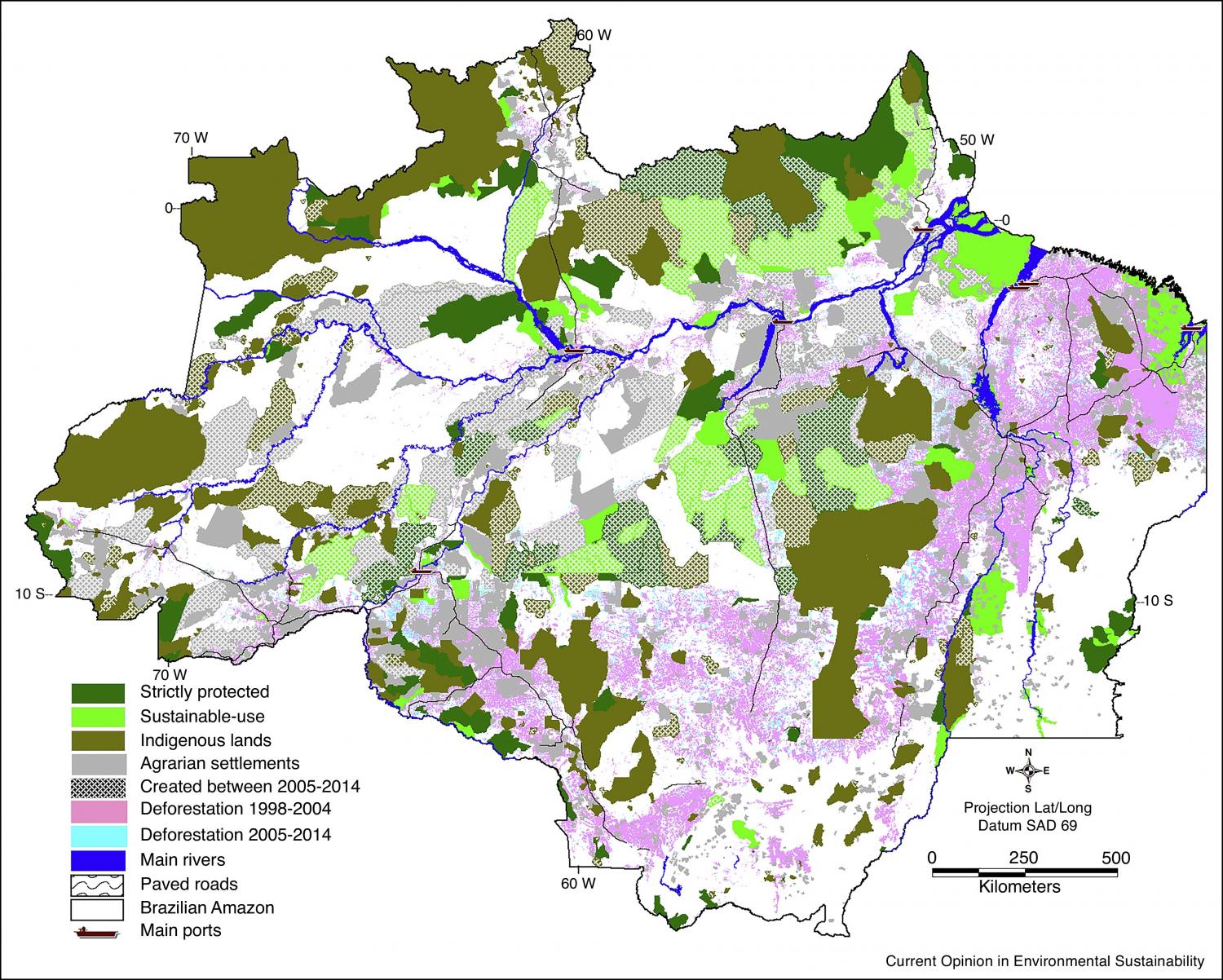
Elsevier, Current Opinion in Environmental Sustainability, Volume 26-27, 1 June 2017
The Brazilian Amazon is being affected by the new worldwide geopolitical transformation that is tending towards an integrated global economy. In the region environmental considerations have not been adequately incorporated into long-term land use planning and this failure has partly been due to the complexities of the country's existing inter-sectorial institutional arrangements. In this paper, we briefly explore two distinct economic development phases that have been reshaping Amazonian landscapes since the 1990s. We first focus on the role of traditional populations in conservation and land use planning (socio-environmental model). We contrast this with the ‘post-environmental’ development model that currently dominates the land use dynamics of Amazonia and which is in stark contrasts with previous advances in environmental protection, whose basis was sustainable use of resources and social participation. The future of the socio-environmental model appears uncertain and its recovery and long-term maintenance to underpin sustainable development will depend on the strengthening the participation of the civil societal sectors that are able to reestablish balance to the sustainability agenda in the region.
